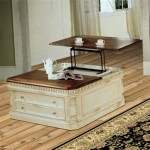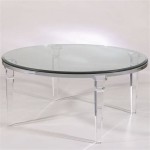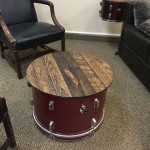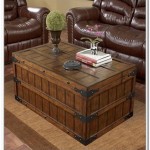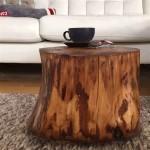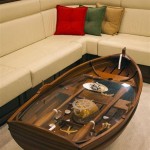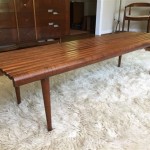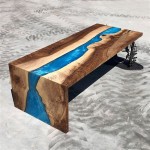How to Choose the Right Ornate Coffee Table Legs
Selecting the right ornate coffee table legs is a crucial step in crafting a statement piece that complements an existing design aesthetic or establishes a new one. The legs not only provide structural support but also contribute significantly to the overall visual appeal of the coffee table. This article explores key considerations when choosing ornate legs for a coffee table, focusing on material, style, size, and the overall design coherence with the intended environment.
Understanding Material Options
The material of the coffee table legs heavily influences their durability, aesthetic appeal, and price point. Common materials for ornate coffee table legs include wood, metal, and resin, each offering distinct advantages and disadvantages.
Wood: Wood remains a popular choice due to its natural beauty, versatility, and ease of customization. Hardwoods like oak, maple, and walnut are particularly desirable for their strength and resistance to wear and tear. Softwoods such as pine and cedar are less expensive but may be more prone to dents and scratches. When selecting wooden legs, consider the grain pattern and color to ensure it complements the tabletop material and the surrounding décor. Wood can be stained, painted, or left natural to achieve the desired look. Intricate carvings and detailing are also readily achievable with wood, allowing for a high degree of ornamentation. Furthermore, wood offers a certain warmth and organic feel that metal and resin alternatives often lack.
Metal: Metal legs, particularly those made from wrought iron, stainless steel, or brass, provide a contemporary and robust aesthetic. Metal can support heavier tabletops and withstand significant use. Wrought iron is commonly used for ornate designs due to its malleability and ability to be shaped into intricate patterns. Brass offers a touch of elegance and sophistication, while stainless steel presents a sleek, modern appearance. Metal finishes can range from polished and glossy to brushed and matte, allowing for further customization. The use of powder coatings can add color and protect the metal from corrosion. Metal legs generally require less maintenance than wooden legs and are resistant to moisture and insects. However, they may lack the warmth and natural texture that wood provides.
Resin: Resin offers a cost-effective alternative to wood and metal, particularly for intricate and highly detailed designs. Resin legs can be molded into virtually any shape and finished to mimic the appearance of wood, metal, or stone. They are lightweight, durable, and resistant to moisture and insects. However, resin legs may lack the structural integrity of wood or metal and may not be suitable for supporting very heavy tabletops. The finish on resin legs can sometimes appear less authentic than on natural materials, and they may be more susceptible to scratching or chipping. Despite these drawbacks, resin legs can be a practical choice for budget-conscious projects or when seeking highly ornate and complex designs that would be difficult or expensive to achieve with other materials.
Evaluating Styles and Ornamentation
The style of the coffee table legs should harmonize with the overall design scheme of the room. Ornate legs can range from Victorian and Baroque to Art Deco and contemporary interpretations, each characterized by distinct features and levels of ornamentation.
Victorian and Baroque: These styles are characterized by elaborate carvings, scrollwork, and intricate detailing. Victorian legs often feature floral motifs, while Baroque legs tend to be bold and dramatic, with pronounced curves and flourishes. These styles are best suited for formal living rooms or spaces with a traditional aesthetic. They pair well with rich, dark wood tabletops and luxurious fabrics. The level of ornamentation can be quite high, making these legs a focal point of the coffee table. It is important to ensure that the tabletop and other furniture in the room complement the intricate detailing without overwhelming the space.
Art Deco: Art Deco coffee table legs typically feature geometric patterns, stylized motifs, and a sense of streamlined elegance. Common elements include stepped designs, chevrons, and stylized versions of natural forms. Art Deco legs are often made from metal, particularly chrome or brass, and may incorporate elements of glass or lacquer. They work well in modern or contemporary spaces with a touch of vintage glamour. The level of ornamentation is generally more restrained than Victorian or Baroque styles, but still adds a distinct visual interest. Art Deco legs pair well with glass or lacquered tabletops and furniture with clean lines.
Contemporary Interpretations: Modern designers often reinterpret traditional ornate styles with simplified forms and updated materials. These contemporary versions may feature abstract carvings, geometric patterns, or unexpected combinations of materials. They can be made from wood, metal, resin, or a combination of these. Contemporary ornate legs can be incorporated into a wide range of design schemes, from minimalist to eclectic. The key is to choose a style that complements the overall aesthetic of the room without being too overpowering. Consider the scale and proportion of the legs in relation to the tabletop and the size of the room.
Determining Size and Proportion
The size and proportion of the coffee table legs are critical for both aesthetic appeal and structural stability. Legs that are too short or too thin may look disproportionate and may not adequately support the tabletop, while legs that are too tall or too bulky can overwhelm the design and make the table appear unstable.
Height: The height of the coffee table should be appropriate for the seating arrangement in the room. A general guideline is that the coffee table should be approximately the same height as the seat cushions of the surrounding sofas or chairs, or slightly lower. This allows for easy access to drinks and snacks without having to reach too far. When choosing legs, consider the thickness of the tabletop and subtract that from the desired coffee table height to determine the appropriate leg length. Shorter legs can create a more grounded and relaxed feel, while taller legs can make the table appear more elegant and refined.
Thickness and Width: The thickness and width of the legs should be proportional to the size and weight of the tabletop. Larger and heavier tabletops require thicker and more robust legs to ensure stability. Thinner legs may be suitable for smaller and lighter tabletops. Consider the overall design of the legs as well. Ornate legs with intricate carvings may appear visually heavier than simpler legs of the same thickness. It is important to strike a balance between aesthetic appeal and structural integrity. Avoid legs that appear too flimsy or too bulky in relation to the tabletop.
Placement: The placement of the legs also affects the overall stability and appearance of the coffee table. Legs that are placed too close to the center of the tabletop may not provide adequate support at the edges, while legs that are placed too close to the edges may look awkward and increase the risk of tipping. A general guideline is to position the legs a few inches inward from the corners of the tabletop. This provides a stable base and allows for a clean and visually appealing design. For larger tabletops, consider using more than four legs to distribute the weight evenly. The placement of the legs should complement the overall shape and design of the tabletop. For example, a round tabletop may benefit from a central pedestal base, while a rectangular tabletop may look best with legs positioned at the corners.
Ultimately, choosing the right ornate coffee table legs involves careful consideration of material, style, and size. By evaluating these factors in relation to the overall design scheme of the room, it is possible to create a coffee table that is both beautiful and functional.

Types Of Table Leg Styles Complete Visual Guide Cabinfield Blog

28 Types Of Furniture Legs Antique Modern Styles Mallery Hall

28 Types Of Furniture Legs Antique Modern Styles Mallery Hall

Furniture Leg Styles A Guide For Antique Styylish

The Basics Of Coffee Table Styling Shades Blue Interiors

Metal Coffee Table Legs Flowyline Design

Furniture Leg Styles A Guide For Antique Styylish

Metal Coffee Table Legs Flowyline Design

Types Of Table Leg Styles Complete Visual Guide Cabinfield Blog

Types Of Table Leg Styles Complete Visual Guide Cabinfield Blog
Related Posts

